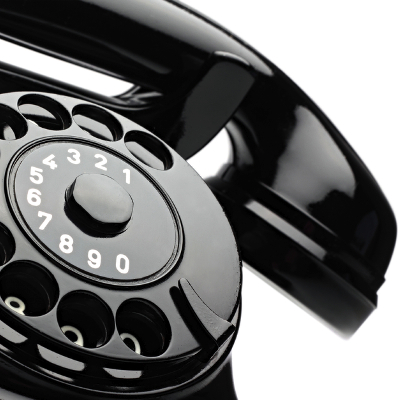Do you ever think about the power of the good old telephone?
In these days, when Social Media is all the rage, it is easy to forget what an effective communication device it is.
So, in this post I make a plea: make the telephone part of your equation when you define your communication strategy.
That is because, next to meeting in person, it is still your fastest way to make an impression.
In the positive or in the negative, that impression can go deep, and I have an example for both.
I’ll tell the negative story first.
The hidden number
The software company Symantec automatically renewed my subscription to their Norton anti-virus software some weeks ago.
I didn’t need the product anymore and wanted to cancel the renewal.
It didn’t seem a problem: the e-mail said I had 60 days to get my money back. But the e-mail didn’t give a number.
It wasn’t easy to find one on their website either. Digging up a number for Belgium took me a whopping 15 minutes.
When I called, it was out of service.
I phoned a US number next. The lady on the phone told me I’d better call the Belgian help desk. She gave me a number — it was the same I tried before.
When I told her it was out of service, she asked me to hold the line…never to return.
I called again and this time I was luckier. A different operator connected me to a call centre in India which, magically, had the authority to solve my problem.
At last…but way too late to save my day.
All too familiar?
Symantec isn’t alone of course.
So many companies do the same: first they hide their number, then it takes ages before you can talk to humans. I am sure you have a similar story to tell and I have little doubt that you found the experience as frustrating as I did.
That is the point: it’s deeply frustrating.
And it makes me wonder: are companies like Symantec aware just how frustrating such an experience is? Are they aware that it will shape my perception of them for the rest of my life?
And do they ever analyze what they could gain if they treated the telephone not as a burden, not as a cost to cut, but as an opportunity?
Which leads me to the positive example.
The greatest engagement device
Zappos, is an online shoe-retailer that is not well known in Europe because it doesn’t make business here.
But in the US, the company is famous. They have an iconoclastic reputation for outstanding customer service.
In their own words, they want to deliver happiness.
And although they are essentially an internet-business, the telephone is a key ingredient in their quest to make customers happy. They see every phone call as an opportunity to leave an impression and to build a lifelong relationship.
Here is how their CEO, Tony Hsieh, puts it in his book, Delivering Happiness:
“As unsexy and low-tech as it may sound, our belief is that the telephone is one of the best branding devices out there. You have the customer’s undivided attention for five to ten minutes, and if you get the interaction right, what we’ve found is that the customer remembers the experience for a very long time and tells his friends about it.”
And those are not just words.
Zappos gives their people leeway to make the most out of every call. Unlike many call centers, they don’t measure performance on average handle time, i.e. on how fast they get people off the phone.
Time is no issue. What counts, is to leave the customer happy, may it take five minutes or an hour.
An emotional experience
Zappos understands that every phone call leaves a deep impression.
Like it or not, it’s always an emotional experience. People feel our vibes and, depending on our approach, it’s a risk or an opportunity.
I’d rather grasp the opportunity, seeing each call as a chance to listen and to better understand, a chance to make myself understood, a chance to be positive and to send good vibes.
So I come back to my plea.
Don’t ignore the telephone when you define (or redefine) your communication strategy. The telephone is your chance to make an impression that e-mail or Social Media just can’t match.
It may sound obvious but in times when many people specialize in Social Media, there’s a risk to view all problems and solutions through the Social Media-lens.
That view will always be flawed because it gives you a tool before you know what you can build.
As Abraham Maslow so fittingly said: “If all you have is a hammer, everything looks like a nail.”

